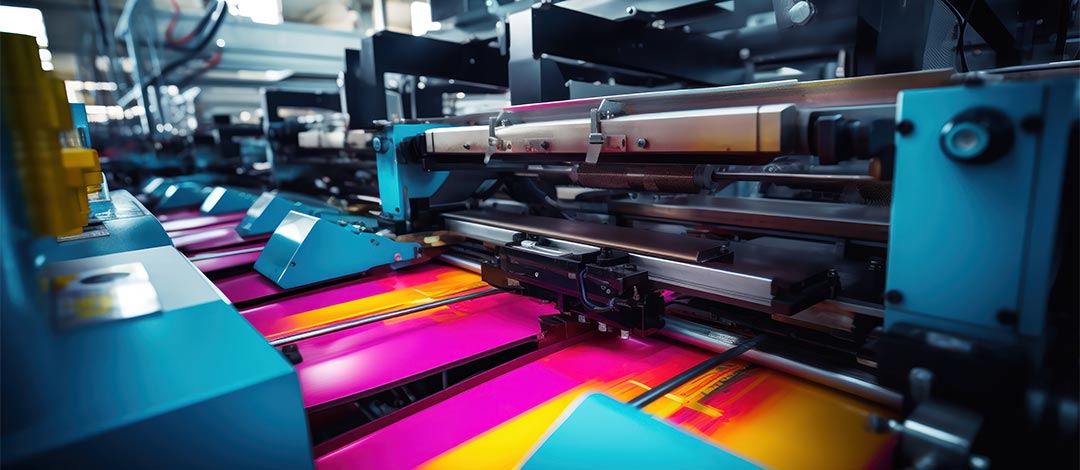In the world of printing, offset printing machines stand out as a cornerstone of high-quality and efficient production. This Offset printing machines guide aims to provide a thorough understanding of these remarkable machines, their functionalities, and their benefits. Whether you’re a business professional looking to enhance your print quality or someone curious about printing technology, this guide is your go-to resource.

History and Evolution of Offset Printing
The journey of offset printing began in the late 19th century. Originally developed to replace lithography, offset printing has evolved tremendously over the decades. From manual operations to highly automated systems, the technology has transformed to meet the growing demands of the printing industry.
The Birth of Offset Printing
Offset printing was invented by Ira Washington Rubel, an American, in 1904. The technique revolutionized the way prints were made, offering better consistency and quality than its predecessors.
Modern Advancements
Today, offset printing machines are equipped with advanced technologies such as automated plate changing, remote ink control, and integrated workflow solutions that enhance efficiency and reduce human error.
How Offset Printing Machines Work
Understanding how these machines operate is crucial for anyone involved in the printing industry. Offset printing works on a simple principle – transferring an inked image from a plate to a rubber blanket, and then onto the printing surface.
The Role of Plates
Plates play a crucial role in offset printing. Made of aluminum, these plates are etched with the desired image or text. The non-image areas attract water, while the image areas attract ink.
The Rubber Blanket
The rubber blanket helps in transferring the ink from the plate to the paper. This indirect printing method ensures that the plate never comes in direct contact with the printing surface, prolonging the life of the plate.
Benefits of Offset Printing
Offset printing offers numerous advantages that make it the preferred choice for large-scale printing jobs.
Superior Print Quality
One of the most significant benefits of offset printing is its ability to produce high-quality prints with sharp images and consistent colors.
Cost-Effective for Large Volumes
While the initial setup may be costly, offset printing becomes highly cost-effective for large print runs. The cost per unit decreases significantly as the volume increases.
Types of Offset Printing Machines
There are various types of offset printing machines, each designed for specific purposes.
Sheet-Fed Offset Printing
This type of machine feeds sheets of paper through the press. It’s ideal for high-quality printing jobs such as brochures, flyers, and posters. Learn more about offset printing costs.
Web Offset Printing
Web offset printing uses rolls of paper, making it suitable for high-volume publications like newspapers and magazines.
Choosing the Right Offset Printing Machine
Selecting the right machine depends on various factors, including the type of projects you handle and your production volume.
Project Type
Consider whether your primary projects are high-quality brochures or large-volume newspapers. This will guide your choice between sheet-fed and web offset machines.
Production Volume
Evaluate your monthly print volume to ensure the machine you choose can handle your workload efficiently.
Offset Printing vs. Digital Printing
The debate between offset and digital printing is ongoing. While both have their merits, understanding their differences can help you make an informed decision. Read more about offset vs. digital printing.
Quality and Consistency
Offset printing is renowned for its superior quality and consistency over large print runs, which is often not matched by digital printing.
Cost Implications
Digital printing may be more cost-effective for small print runs due to lower setup costs, but offset printing offers better cost efficiency for larger volumes.
Maintaining Offset Printing Machines
Proper maintenance is essential to keep offset printing machines running smoothly and to extend their lifespan.
Regular Cleaning
Ensure that the machines are cleaned regularly to prevent ink buildup and ensure consistent print quality.
Routine Inspections
Conduct routine inspections to identify and address any potential issues before they escalate.
Future of Offset Printing
Despite the rise of digital printing, offset printing continues to thrive and adapt to new challenges.
Integration with Digital
The future of offset printing may see more integration with digital technologies, offering hybrid solutions that combine the best of both worlds.
Sustainability Efforts
As sustainability becomes a priority, offset printing is evolving to incorporate eco-friendly practices and materials.

FAQs
What is offset printing best for?
Offset printing is best for high-volume print jobs that require consistent color and quality, such as magazines, brochures, and newspapers.
How does offset printing compare to digital?
While digital printing is ideal for short runs and quick turnarounds, offset printing offers superior quality and cost efficiency for larger runs.
What are the maintenance needs of an offset printing machine?
Regular cleaning and routine inspections are crucial for maintaining offset printing machines and ensuring their longevity.
This article contains affiliate links. We may earn a commission at no extra cost to you.







